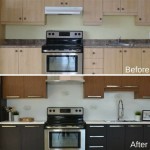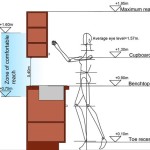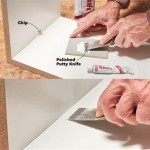Essential Aspects of Spray Kitchen Cabinets
Spray painting kitchen cabinets has become an increasingly popular method to update and transform their appearance. It provides a cost-effective way to achieve a custom finish that complements the existing decor or creates a completely new look. To ensure the best possible results, it's crucial to understand the essential aspects of spray painting kitchen cabinets.
Surface Preparation
Adequate surface preparation is paramount to a successful spray painting project. Begin by removing all cabinet doors, hardware, and drawers. Clean the surfaces thoroughly with a degreaser to remove dirt, grime, and oil. Sand the cabinets lightly with fine-grit sandpaper to smooth out any imperfections and enhance paint adhesion.
Primer Selection
Primer plays a critical role in creating a seamless bond between the cabinet surface and the paint. It seals the wood, prevents tannin bleed-through, and provides a smooth base for the topcoat. Choose a primer specifically designed for kitchen cabinets, which typically have a higher solids content for better coverage and durability.
Paint Selection
Selecting the right paint for your kitchen cabinets is essential for both aesthetics and longevity. Opt for a paint designed for cabinets, which has excellent adhesion, durability, and resistance to wear and tear. Consider the desired finish, whether it's matte, satin, semi-gloss, or high-gloss, to align with the overall kitchen design.
Spray Equipment
The type of spray equipment used will significantly impact the quality of the finish. An HVLP (high volume, low pressure) sprayer is recommended for spraying kitchen cabinets as it provides fine atomization and minimizes overspray. Ensure the sprayer is in good working order, clean, and adjusted to the appropriate settings for the paint being used.
Spray Technique
Proper spray technique is crucial for a smooth, even finish. Hold the sprayer perpendicular to the surface and maintain a consistent distance. Apply thin, even coats, allowing for proper drying time between each coat. Avoid overloading the surface with paint, as this can lead to drips and runs.
Additional Considerations
Other aspects to consider when spray painting kitchen cabinets include:
- Proper ventilation: Ensure adequate ventilation to avoid inhaling harmful fumes.
- Protection: Wear a respirator and gloves to protect yourself from overspray.
- Lighting: Use good lighting to inspect for imperfections.
- Drying time: Allow sufficient drying time for each coat before handling or assembling the cabinets.
- Touch-ups: Touch-up any areas that may require additional paint or require sanding before applying a clear topcoat.
By following these essential aspects, you can achieve professional-looking spray-painted kitchen cabinets that will enhance the aesthetics, functionality, and value of your kitchen.

How To Paint Kitchen Cabinets Like The Pros

How To Paint Kitchen Cabinets With A Gun Painttech Training Academy

3 Ways To Spray Kitchen Cabinets In The Sprayworks

How To Spray Paint Kitchen Cabinets Diy Family Handyman

What Is The Best Spray Paint On Kitchen Cabinets

Is It Better To Spray Or Roll Kitchen Cabinets Painting

Diy Spraying Kitchen Cabinets Like A Pro Part Two Made With Grace And Grit

Spray Painting Kitchen Cabinets Pictures Ideas From

Can I Use My Kitchen During Cabinet Painting

Kitchen Spray Painting The Facelift Company
Related Posts








